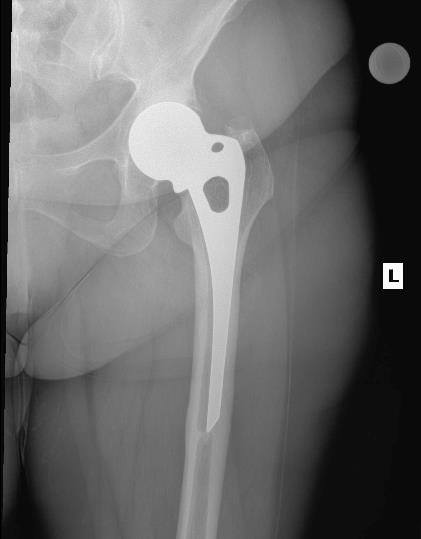hemiarthroplasty with pedestal formation at the distal aspect of the stem with a large radiolucent line in Gruen zones 5 and 6.
Aseptic loosening is a common reason for revision hip arthroplasty and should be considered in any patient who presents with groin, buttock or thigh pain after a hip replacement. In this situation, ESR and CRP values were within defined limits, making infection highly unlikely. Common reasons for aseptic loosening include poor initial fixation, osteolysis, and mechanical loss of fixation over time. Signs that are suggestive of aseptic loosening include progressive radiolucent lines, change of implant position on sequential radiographs, a positive bone scan, and pedestal formation at the distal aspect of a femoral stem.
